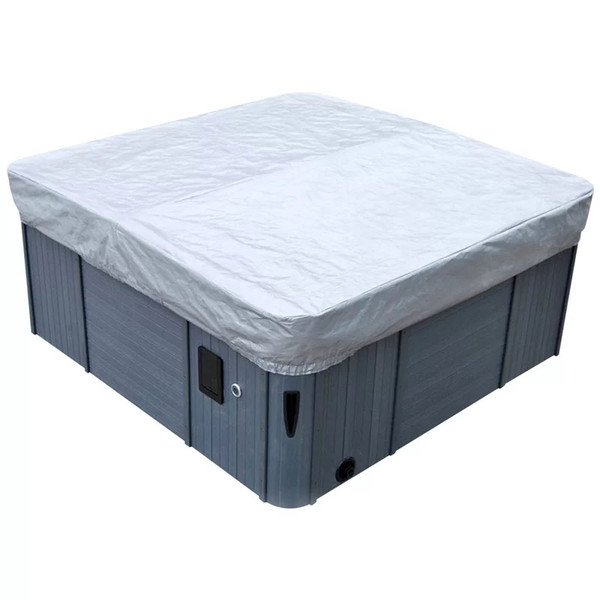With spring just around the corner, you might be considering a structure or gazebo for around the hot tub to keep the snow and ice away from the spa next winter. These structures can help to protect your hot tub from potential damage the harsh weather may cause, and some even have enclosed sides to protect your ears from the crisp chill of the wind while you’re soaking in the spa.
Things to Consider When Planning Your Hot Tub Enclosure
Foundation
One of the most important things to consider is the foundation where you’ll be placing the gazebo or building the structure. Your hot tub should already be resting on a solid, strong foundation, and you’ll need the same for your enclosure as well as proper drainage avenues and possibly stable footing as well depending on the type of base you’re looking at. Popular materials for a base include a concrete pad, patio stones, or even crushed gravel.
Since local building codes often have requirement for sizes and specifics of outdoor structures, go over your plans with a local building authority or contractor before building to ensure everything is up to code and safe.
Space
Your enclosure must be large enough to accommodate the safe placement of wiring and follow local electrical code and building requirements. Similarly to the foundation requirements, depending on your local code, there will be specific guidelines for spacing and wiring your outdoor structure, so make sure to speak with a qualified local contractor or electrician when planning your enclosure.
Ventilation
An extremely important part of your hot tub enclosure is ventilation. Your hot tub creates quite a bit of steam and if there isn’t proper ventilation it can cause problems. Excess moisture pooling in the crevices or wood of your enclosure can cause build up to damage over time or even mold. In the summer, you can generally open the windows of your enclosure if it has them to release the moisture into the outdoors, however in the winter if you try to do this the moisture can freeze to the sides of the enclosure on surfaces.
A common solution for ventilation is to install a ceiling fan or powered ventilation system into the spa enclosure. If purchasing a pre-built structure, consider looking for an option that has this already built in. With a ventilation or fan though you’ll also need to factor in considerations for local electrical and building codes, so add “ventilation system” to the list of things to discuss with your local contraction or electrician prior to finalizing your building plans.
Privacy
Another added perk of a hot tub enclosure is privacy. If in a small or open backyard, some enclosures come with one or multiple closed off sides or window options to allow for some coverage from any neighbours trying to sneak a peak at your luxurious hot tub. If privacy is a perk you’re interested in, make sure to look for an enclosure with closed off sides. You can also find options for enclosures that are just privacy screens to the side without any roof - although this won’t protect your hot tub from the elements if that’s your end goal.
When looking at an enclosure that has closed off walls, make sure to pay close attention to your ventilation needs, as more moisture will build up the more closed off your structure is.
Enclosure Alternatives
In the middle of winter, you might consider waiting until next fall when the weather’s a little nicer to start planning your new enclosure. In the meantime, there are a few things you can do instead to help protect your hot tub from the elements.
Shovel!
The main problem with the snow and ice is that it’s building up on and around your hot tub which creates an unpleasant spa area, plus the constant cold and moisture can cause damage to your spa over time. A simple solution is to just shovel around the hot tub and make sure to keep the area clear and snow off the spa. Be cautious when shovelling around the hot tub, particularly on the cover, as shovels can have sharp edges that can damage the spa and the spa cover easily.
Cover Cap
To help protect your spa and cover from damage by the elements, consider a hot tub cover cap. These are covers made from polyethylene are designed to go over your thermal cover and protect it and the top of your hot tub from harsh weather, debris and dirt. These cover caps also come in a longer version designed to help protect the skirt of your spa from the elements as well; a quick and easy way to help protect your spa in the winter without a large amount of work.
Cover Lifter
A lifter for your thermal hot tub cover is an amazing thing to have in the winter especially. After brushing off most of the snow on your cover, you can use a cover lifter to easily slide the cover off of your spa, taking any snowy residue off with it. Most cover lifters also store the cover beside your spa and a foot or two off the ground, which keeps it away from the snow and ice in the yard. If a cover lifter isn’t your thing, consider looking at a cover stand to keep the cover away from the elements; snow and ice can quickly deteriorate and soak into your cover, drastically shortening it’s life.
The number one goal in the winter is always to maintain your hot tub in peak condition by keeping it clear and dry. An enclosure is a fantastic way to accomplish this, but if it isn’t ideal for your backyard or you’d rather wait to install it when the weather is clearer, there are alternative available to help keep your hot tub safe in these cold months.



